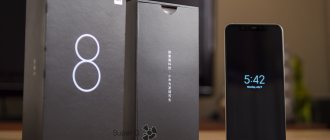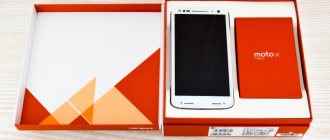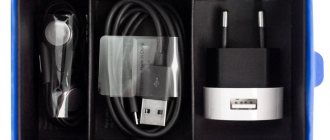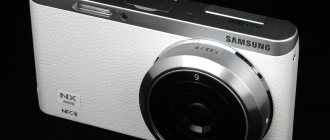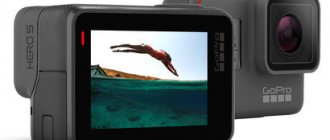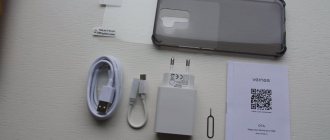Equipment
The box for the device is high quality, black and slightly velvety. There is clearly something flagship hidden inside - this is the first impression.
In addition to the device itself, inside I found: a simple silicone case, a USB Type-C cable, a power supply and a clip for the SIM card tray.
Of course, in the box there was an adapter from USB Type-C to a regular 3.5 mm jack. Well, LeEco wanted to play Apple, so what now? True, the “Apple” device is immediately equipped with headphones, but here we only have an adapter and come on, get out of it already. If you want your own headphones, buy them, lose the adapter and sit without sound, but if you want, buy them for 15 bucks. Choice, huh!
Can MediaTek Helio compete with Snapdragon?
The leeco le pro 3 ai x650 and x651 models are equipped with a 10-core MediaTek Helio processor. At first glance, it may seem too weak in comparison with Snapdragon, but testing on well-known systems like Antutu shows that not everything is so simple. “Dragon” shows results a little higher, but in some moments it is still inferior.
Hello everyone from the Mobile Quibbler channel. Today we bring to your attention a detailed review of the LeEco LeTV Pro 3 X651/X653 AI smartphone, which we ordered on the Aliexpress website.
The phone arrived in high-quality and reliable packaging, preventing any damage in transit. The box looks very stylish. The top cover of the box has silver embossing and logo. Everything looks solid.
In the box, in addition to the smartphone itself, we found a branded power supply that produces 3 Amperes at a voltage of 3.6 to 8 Volts, and 2 Amperes at a voltage of 12 Volts. USB cable – USB Type-C, adapter for connecting a 3.5 mm headset. The envelope, along with the warranty and brief instructions in Chinese, contains a paperclip for removing the tray with SIM cards. There are also fun stickers for the rear camera.
The phone lies very confidently in your hand, you can feel the weight, but not much, in moderation. The manufacturer's logo is embossed on the matte metal surface of the back cover. At the top of the lid there is a dual camera with a two-color flash, and just below there is a fingerprint scanner.
On the right side there is a volume rocker and a power button. The buttons have a moderately tight, clear press. On the bottom edge of the smartphone there is a USB Type-C charging socket, a speaker and a microphone hole. On the left side there is a tray for two Nano-SIM standard SIM cards.
On the front panel at the top there is a front camera, proximity and light sensors, as well as a customizable notification LED. Touch buttons are hidden under the screen.
The operating system is Android version 6.0 Marshmallow with the proprietary LeEco EUI shell. In general, this add-on repeats many of the capabilities of the “naked” android, but there are also additional “chips”. For example, swiping from the top of the screen opens not the usual curtain with quick settings, but a notification menu. But when you press the left touch button, the settings curtain opens, where the list of running applications is immediately shown. Running programs can be closed by swiping up. And swiping down, on the contrary, will leave the application in memory running in the background. Here you can see how much free RAM is left.
A long press on the left touch button brings up a menu for setting up desktops, widgets, themes, wallpapers and sorting icons; auto and manual sorting modes are available.
In the screen settings there is scaling - standard or enlarged. Improved video display. Notification LED settings.
Eye protection mode, when turned on, the screen becomes with a soft yellowish tint, and is adjustable within a wide range. Ultra-high resolution mode to increase the resolution of low-quality videos, but we didn't notice much of a difference when turned on.
The speaker is loud enough, there are no low frequencies, only mids and highs, but the sound is not annoying, quite normal. It is possible to assign different ringtones to each SIM card separately. Convenient “do not disturb” mode - you can flexibly configure messages and calls. Enable different call profiles: by day and time, and also create your own rules.
Design
On the one hand, continuity in design can only be welcomed. From generation to generation, nothing particularly new, super unique appears, for which you immediately want to part with a couple of hundred dollars.
On the other hand, I already want something new. It's time for LeEco to move on and move away from Huawei's design. They went their own, slightly “Samsung” way, but most importantly, they stopped producing the same smartphones with a dark middle (screen, I mean) and symmetrical inserts at the top and bottom.
LeEco finally gave birth and released a smartphone that does not cut your palm with its edges. The protective glass now has a 2.5D effect.
However, it is so weakly expressed that you cannot immediately recognize it. In press images, artificial sunbeams make the smartphone look rounded, streamlined and aerodynamic. In life it is not so noticeable.
There is a plus to this, because protective glass fits better on more or less flat screens.
At the end of 2020, many manufacturers completely went crazy and released their frameless devices. Look, even state employees have already caught up! I'm talking about Bluboo Edge, which is exactly like the Samsung Galaxy S7 Edge.
And the third generation of Leika still has wide, black frames.
This really looks like it. Moreover, there was no black version.
When the device is in sleep mode, everything is fine. There’s such a device lying around, pretending to be a “Huawei” (that’s it, I’m done). It’s worth turning on the screen and... these frames!
With dark wallpaper, frames are not so noticeable
Above the screen there is the familiar “face” of sensors, an earpiece and a front camera eye. It's like she's telling you, “Hey! Find five differences from LeTV Le 1S.”
The touch keys are located at the bottom. You can't see them at all, but when the display wakes up, they appear out of nowhere. It looks very decent. Especially the corporate logo, which is responsible for the “Home” function here.
The keys can be reassigned to any other function in the settings. It's really convenient.
On the back side there is a fingerprint scanner in a fairly convenient place. You just place your index finger on it and the smartphone instantly unlocks. Almost instantly.
The sensor can be used to take pictures while the camera is active (front, rear, it doesn’t matter) and to block individual applications. So that others don’t get into the habit of climbing into the Gallery and looking at your drunken photos with boys, masterpieces of mobile photography.
Girls can use the fingerprint pad as a mirror. It reflects well.
And at the same time, it collects fingerprints well.
The camera sticks out. In my opinion, even too much. But it looks impressive and elegant. It would seem that the lens should be scratched the next day, but I have been using the device for a month now and nothing has happened.
In general, the smartphone looks decent. Of course, I scold him. Still, it’s quite difficult to distinguish Le 3 Pro from Le 2 or from the same 1S. You need to be somewhat gadget savvy. You can't take it here forcefully.
However, otherwise I liked the new “watering can.” Especially if you wear it without a case.
The smartphone is quite thin - 7.5 mm. And this is perhaps the most pleasant thing about this device. To put him in some kind of briefcase means to spoil his appearance and make him look chubby. And then it’s not the same feeling anymore.
| Length | Width | Thickness | Weight | |
| LeEco Le 3 Pro (5.5) | 151,4 | 73,9 | 7,5 | 175 |
| LeEco Le Max 2 (5.7) | 156,8 | 77,6 | 8 | 185 |
| OnePlus 3 (5.5) | 152,7 | 74,7 | 7,35 | 158 |
| iPhone 7 Plus (5.5) | 158,2 | 77,9 | 7,3 | 188 |
Our hero fits perfectly in the hand. It feels like we have a 5.2- or 5.3-inch panel here. But no!
LeEco managed to fit a 5.5-inch screen into a fairly compact body. Not many manufacturers care about the dimensions of the device; the most striking example is the size of the iPhone 6S/7 Plus. Hefty devices that could easily lose weight, but Apple doesn’t think so.
Display
Frankly speaking, the screen is nothing unusual. Standard IPS matrix without an air gap (In-Cell).
- diagonal 5.5 inches
- resolution 1920 x 1080 pixels
- dot density per square inch - 403 ppi
- brightness 500 nits
The backlight is quite powerful, but not record-breaking. Quite in the spirit of modern devices.
While competitors are pushing 146% of the NTSC palette coverage, we have only 80%. There’s really nothing special to be proud of, so I don’t understand why LeEco disclosed this parameter. This is not usually done.
Viewing angles are good, but if you deviate too much from direct view, the picture begins to become covered with a light fog. In principle, this is normal behavior for an IPS panel.
Below we have Asus Zenfone 3 (above or left) and our hero, located below or on the right in the photo.
However, I didn't really like the rendering of white. It always gives off a little bit of pink. Yes, in the settings there are several presets with which you can slightly tweak the color scheme, but this does not solve the root problem.
If you have nothing to compare with, then perhaps you won’t notice all this. I had several devices in my hands at once. One is green (Mi Note 2), the other is “pink” (our character) and so on. There is no perfection in the world, well, at least not in my hands right now.
Specifications LeEco Le 3 Pro (LEX720)
- Qualcomm Snapdragon 821 processor (4 Kryo cores with operating frequency up to 2.35 GHz)
- Adreno 530 graphics up to 652 MHz
- RAM type LPDDR4: 4 (2.7 GB free after reboot) or 6 GB
- UFS 2.0 standard data storage: 32 (23.16 GB actually available), 64 or 128 GB
- No support for Micro SD memory cards
- 5.5-inch IPS display with 1920 x 1080 resolution (403 ppi density)
- front camera 8 MP (f/2.2, pixel size 1.4 microns, lens view 76.5 degrees)
- main camera 16 MP (Sony IMX298 sensor, f/2.0, 6 lenses, phase detection autofocus, 4K video recording, Slo-Mo 720p at 120 fps)
- battery 4070 mAh fast charging QC 3.0
- OS Android 6.0.1
- EUI 5.8 shell
- Sensors: accelerometer, light and distance sensor, fingerprint scanner, IR port, Hall sensor, digital compass
- connectors: USB Type-C (OTG works) and 3.5 mm audio output
- Dimensions: 151.4 x 73.9 x 7.5 mm
- weight 175 grams
Wireless capabilities:
- 2G, 3G, 4G / 4G+ (LTE bands: 1, 2, 3, 4, 5, 7, 8, 20, 38, 39, 40, 41)
- support for two Nano SIM cards
- Wi-Fi (802.11 ac, Dual Band, 2x MIMO), Bluetooth 4.2, NFC (full functionality)
- Navigation: GPS, Glonass, Beidou
There is nowhere to insert the memory card. Why? Because LeEco is a Chinese media giant. It needs to sell content directly to users' devices through its online platforms. And it would be nice if users didn’t have enough memory, the content changed, new ones were bought, old ones were deleted. It's business, baby!
For the same reason, the device can please its owners with an IR port. Leika also makes televisions (they promise that they will be sold here this month), so everything is logical.
Rejoice, O lovers of LTE band 20! It is here, and your operator is and will be in China.
The main feature of LeEco smartphones
In general, LeEco are special guys in everything. They entered Russia with such pomp that some people became envious. They’ve made a smart bicycle, they’ve made a TV carriage, they’ve made movies, and they’re constantly doing something new...
So, everything is different for them. Including the interface. The version is Android 6.0 with EUI shell.
I’ll say right away: EUI is the kind of thing that you either like right away or never like again. LeEco took the standard operating logic of Android as a basis, but added a few bells and whistles from iOS to it - and then mixed everything up so much that there are practically no similarities.
Some things in the EUI shell go against the logic of Android or iOS. This is often discussed in reviews of Western media, which are accustomed to Google’s “stock” interfaces. I wouldn’t call this a disadvantage, I’d just advise you to use the device yourself before drawing conclusions.
For example, in the notification curtain there are no widgets for quick access to frequently used functions. They are hidden on the touch multitasking button - and combined with a “carousel” of recently launched applications, which is somehow strange. There are duplicate menu items in Settings, although this is generally a problem with the Google platform as a whole.
However, this is Android, here you can fix everything that you don’t like or is unusual. And the shell itself rarely catches our eye - we mainly use third-party applications, including Google. And everything is stable there, regardless of the smartphone.
Modifications and versions of the smartphone
It turned out that there are not two or three versions of LeEco Le 3 Pro, but four. And they all differ in memory capacity. First of all!
The youngest model (I have in my hands) comes with 4 GB of RAM and 32 GB of internal memory.
Then there is a modification with 6 GB of RAM and 64 GB of internal storage.
Then, unexpectedly for everyone, LeEco decided to release a version again with 4 GB of RAM, but with 64 GB of internal memory.
The latest, top modification is a 6 + 128 GB ratio.
In addition, the configurations differ from each other and the processing of the case. Thus, the youngest model is sandblasted, so the metal turns out matte, without visible texture.
All other versions (more expensive) have a body treated with some kind of gold paste, so they have clearly visible transverse stripes. This is the fashion for them. Just take a look at the models from Xiaomi: Redmi Pro and Mi5S Plus.
Why update the firmware on your Android smartphone?
Everyone's motives are different, but mostly to eradicate some problems with the phone.
- There is a problem with the front or rear camera.
- Poor display response to touch.
- I would like to see the new Android Pie 9.0.
- I'm tired of the old version of Android and want to expand its functionality.
- The phone doesn't want to turn on.
- The phone stopped charging.
Performance
In terms of performance, our hero did not disappoint. Firstly, there is today's top processor from Qualcomm.
By buying a smartphone with such a chipset now, you don’t have to worry about the gadget’s performance for the next one and a half to two years. The safety margin of the device is very large.
All toys fly at maximum settings, nothing glitches or lags, Adreno 530 clicks all titles one by one, like nuts.
Secondly, even 4 GB of RAM is plenty here. I'll prove this with a simple test.
At the very beginning, I opened 5 tabs in the Chrome browser: two of them were heavy reviews from our website, then Lenta, the Rossiyskaya Gazeta website, and one more “heavy” resource. Then I sequentially opened and waited for literally all the applications that you can see in the screenshots below to load. There were 48 of them in total, not including games.
Ultimately, the built-in task manager showed free 576 MB of RAM. This is very little, so I expected that previously opened tabs in the browser would start to reload. BUT! They were still downloaded and Chrome did not reload them.
It turned out that the system stores in RAM only 9-10 utilities, which were opened later than others. The rest are simply unloaded from memory and opened again when restarted. However, Chrome remains intact and that's good news!
In conclusion, the cherry on the cake, because it cannot but warm the soul of those who are chasing the very best. In AnTuTu, Leika scores the highest among all currently available Android devices. Only iPhone 7 / 7 Plus is faster.
The rest of the tests didn't disappoint either.
Productivity
The technical characteristics of the LeEco Le Pro smartphone model 3 Elite (X722) indicate its high performance. Antutu tests also indicate this.
| Chipset | Snapdragon 820 |
| Cores | 4 |
| Clock frequency | 2x2.15 + 2x1.6 GHz |
| Technological process | 14nm |
| Graphics editor | Adreno 530 |
| operating system | Android 6.0.1 Marshmallow |
| Shell | EUI 5.8 |
You can choose the amount of RAM to suit your taste. There are three versions:
- 4+32 GB;
- 6+64 GB;
- 6+128 GB.
The latest version, with a capacity of 128 GB, is difficult to find on sale. This set of versions is explained by the fact that it is not possible to install an additional memory card. Models of all characteristics work quickly, with high productivity and performance margin. Easily open and run multiple applications or run in the background. When launching games, there is no need to reduce graphics settings.
Selfie camera
The front camera is 8 megapixels and has a fixed focus. Some manufacturers have already started putting autofocus on their front sensors, so I specifically put emphasis on this.
- single pixel size 1.4 microns
- f/2.2 aperture
- 76.5 degree lens
Despite quite decent “paper” characteristics, we don’t have a camera.
It is noisy, blurry at the slightest lack of lighting, with poor detail. What I didn’t expect was exactly this. Now even mid-range and budget smartphones have fairly decent selfie cameras, but here everything is somehow really sad.
The video sensor records in a resolution of 1280 x 720 pixels at 30 frames per second. I won’t give an example, because the smartphone doesn’t have much to boast about.
A camera with great potential
The main camera in the LeEco Le Pro3 smartphone is a Sony IMX298 module with phase detection autofocus, f/2.0 aperture, optical stabilization and 1.4 micron photosensitive pixels. This sensor is already familiar from the Xiaomi Mi5 and OnePlus 3 smartphones, and in terms of the pixel size of the matrix, Le Pro3 does not lag behind the Samsung Galaxy S7. However, as always in the case of mobile photography, not only hardware plays a role, but also software algorithms for processing images. So to judge the quality of photos just because the camera module is no different from the OnePlus 3 (one of the best in terms of shooting) would be stupid. Due to the use of different software, the victory of a particular smartphone will depend on the usage scenarios. From myself I can say that the Le Pro3 shoots really very well, and with future firmware updates it may start to do it even better.
Sometimes in terms of detail, focusing speed and overall image quality in difficult conditions, it does not reach the top five market leaders, but in general the photos are much better than almost any smartphone officially sold in Russia that costs up to 35 thousand. Le Pro3 has everything you need for active use of the camera: manual mode, slow-motion video shooting, good panorama stitching. The front camera also did not disappoint and the 8 megapixel sensor produces self-portraits of good quality, although I would advise turning off the popular options in Asian countries for “improving” the face.
Main camera
The rear camera isn't much fun either.
LeEco claims that the device uses a Sony IMX298 sensor. Let me remind you that exactly the same matrix is installed in OnePlus 3. However, either the Chinese are simply, so to speak, being disingenuous, and in fact they use a different module, or there are no photo processing algorithms here at all.
The thing is that 1+3 makes simply gorgeous shots. In terms of shooting quality, it is very close to top solutions from Samsung. With all this, Le 3 Pro takes mediocre pictures, about the same as Xiaomi Redmi Note 3, and maybe even worse. Check out the examples.
In the dark, the photos are flat, with unclear color reproduction, lack of saturation and, of course, normal detail.
If anything, download the archive with the originals (without resize) from this link.
After all, we are reviewing a flagship, so it should have a corresponding flagship camera. At least something of more or less high quality. However, this did not happen.
Just for comparison. Let's take a photo taken with our hero's camera (on the left) and a photo taken using Xiaomi Mi Note 2 (on the right).
Smartphone LeEco Le Pro 3
The LeEco company has seriously accelerated - in one year of its active presence in the mobile smartphone market it was able to become a serious player. In China, the company is one of the 10 most popular smartphone brands. More recently, LeEco expanded its global presence and officially entered the Russian market, so it’s worth keeping a close eye on the smartphones of this Chinese company. LeEco Le Pro 3 is a new flagship smartphone from the Chinese, which is going to take down the new iPhone 7. By the way, LeEco continues to pursue an aggressive policy towards Apple and it seems that they are doing a good job of PR on this. Earlier this year, LeEco President Jia Yueting called Tim Cook the Hitler of the mobile industry. This time, the Chinese humiliated the new iPhone 7 Plus in every possible way, saying that the smartphone has very little innovation and is overpriced. Let's evaluate the new flagship of the Chinese company LeEco Le Pro 3 in this review.
Making a video
All LeEco smartphones can shoot 4K video. And our hero is no exception.
The picture turns out quite decent, but the same cannot be said about the sound track. Its quality is disgusting. There is metallic noise, poor detail, and it also feels like the mono sound has been stretched over two channels.
In addition, the smartphone shoots Slow Motion videos at a frequency of 120 fps and a resolution of 720p. There is nothing absolutely outstanding: poor detail, huge pixels. The function is here for the sake of simply being.
The pain of firmware and software
Users cried, took drugs, but ordered from China and made their own devices. What I mean is that by default the firmware only has English and Chinese languages. There is no Russian, because the device is not yet sold outside of China.
Some sellers roll out home-made versions of firmware, where there is a partial translation (60-70 percent, no more). You can do the same thing yourself if you ask the seller in advance not to touch the device and its “brains”. However, remember that OTA updates will no longer come. You will have to sew it by hand in the future.
I'll tell you about what I liked.
I love EUI for its quick access toolbar. Let me remind you that all the latest applications and quick access icons are located in a separate menu, and not in the curtain that drops down from above. It is very similar to that in iOS. Well, why not, when it’s so convenient and elegantly made.
Everyone knows that the device can be unlocked using a PIN code. So, this digital panel moves to the left or right edge of the screen, depending on which hand you hold the smartphone with. At first I thought how the device knew which hand I was holding the phone with. This clever thing works very simply.
If you hold the device, for example, with your left hand, then you try to swipe on the left side of the screen, because your finger does not even reach the middle of the display. The smartphone recognizes the area where you swiped your finger and moves the keyboard to the desired edge of the screen.
Now about all sorts of glitches and oddities.
I just had a manually compiled, unofficial assembly - 5.8.017S. At the time of release there was already a more recent version - 018S, but I did not install it. Firstly, there are not many changes in it, and secondly, laziness.
The display backlight constantly turns on by itself. I don't know what could be the matter. Most likely, in a crooked, homemade firmware.
In terms of stability, I would not say that everything is perfect.
We will immediately blame the software assembly on a crooked one; other updates may not have all these points.
From time to time, the smartphone thinks a little. For a split second, but it's noticeable. You can’t blame the hardware, it’s maximal, but software optimization is a big deal.
Only by the third generation of the Leica did I decide that I still didn’t like system fonts. Russian letters are bolder than English ones, the distances between characters are different, and they are drawn somehow strangely: some letters are thicker, others thinner. One gets the feeling that you are using some kind of low-budget underground Chinese counterfeit iPhone, and not a smartphone from a major brand.
Yes, it is possible to download additional fonts through the company catalog. But more or less interesting copies are paid, and free ones plus/minus are the same. And the Russian language will look something like this...
Sound quality
I think I'll go to another city. I specially downloaded all my music to listen to it on the road. I threw away the headphones (my option), took the smartphone and... discovered that I couldn’t connect them. USB Type-C be damned. I forgot the adapter at home. What if I lost it?
The LeEco-promoted CDLA or Continual Digital Lossless Audio standard is supported. Sound transmission in this case means via a USB Type-C connector and, understandably, compatible headphones. These are not included in the kit, you can buy them separately.
For us, a wide range of consumers, this CDLA is neither hot nor cold. Firstly, few people have heard about this standard and headphone manufacturers don’t care about it. There are practically no compatible accessories; adapters will only worsen the sound.
In general, if you need high-quality sound through your favorite headphones, which, I’m sure, you spent a long time and scrupulously choosing, then forget about LeEco Le 3 Pro.
By buying this smartphone, you seem to support the stupidity of the manufacturer in refusing the headphone jack. And all this just to get ahead of Apple.
Moreover, I compared the sound (when I didn’t forget the adapter) with Xiaomi Mi Note 2, and the latter turned out to be much more interesting in terms of sound quality. Not by much, but the difference is still felt.
By the way, the speaker is very loud. You need to make the sound quieter, otherwise everything your interlocutor says will be heard by those around you. But on a noisy street this is it. We put a plus.
The multimedia speaker is quite ordinary. Average in both volume and quality.
Battery life
But here the smartphone sincerely pleased me. The device does not need to be charged every day; its battery life is enough for one and a half to two days of moderate use.
If you drive the device both in the tail and in the mane, then it will live for one day. BUT! With the screen on, about 5.5 hours, constant background data transfer, notifications (4G/Wi-Fi) and so on. If you turn off Wi-Fi and GPS, you can achieve slightly better results, but I did not do this. I always leave all toggle switches activated.
In general, by modern standards, the “watering can” has good autonomy. My devices don’t last longer than 3 hours with the screen on, but this character has gone far ahead.
